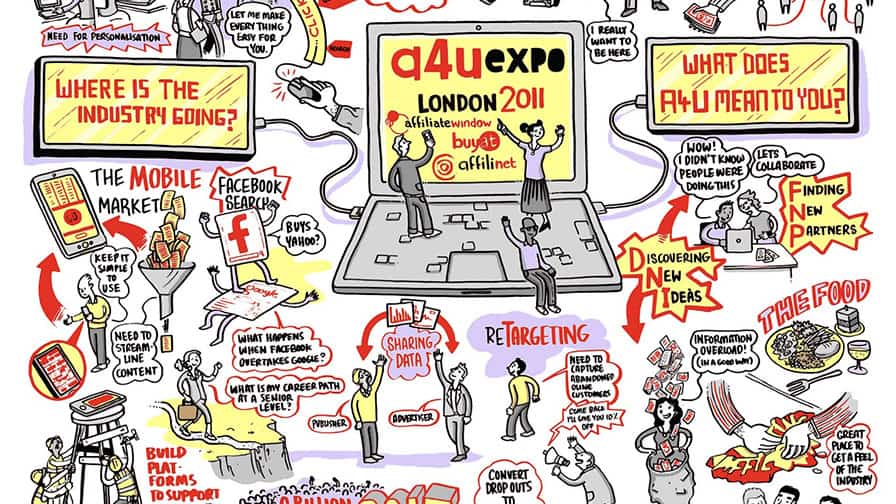Unless you’ve been living under a rock this past month, you’ll know that we’re gearing up for PI LIVE London, which will take place next week. Unearthed from the archive, we came across a gem from our illustrator, Joel Cooper, who created a couple of masterpieces as part of a4uexpo. Who remembers our first show in 2007?


This window into the past offers us an opportunity to see the trends and issues we were discussing at the time in comparison to now.
“What do I do with all this data? How do I act on what it’s telling me?”
We are facing the impending death of third-party cookies, despite Google pushing back the phase-out until 2023. This means unprepared marketers are beginning to panic about the loss of data and are working on solutions. A stark difference from this theme from 2010, where having a large amount of data and not knowing what to do with it was the worry!
However, right now, before the phase-out of third-party cookies by Google, there is a huge amount of data available. Whereas in 2010 there were far fewer sources, there are now hundreds of ways to acquire, manipulate and set it to good use as part of your performance play.
The industry is now at the point where we’re now seeing issues surrounding personalisation and the amount of personal information that customers are being targeted with.
At this year’s PI LIVE London there are some great opportunities for you to keep up with the latest on this topic, including a talk from Tomas Seliokas, Solution Business Manager at Similarweb, on Performance Marketing Trends: The Data You Need to Build the Perfect Strategy.
Have we become more involved in the mobile space?
It’s hard to imagine a world without mobile phones. This was most likely also the case in 2010, but it definitely seems a lot more impossible now than it did a decade ago.
This prediction was definitely correct, but it seems we have gone above and beyond what the industry thought it would be like at this point. Back in 2010, sure, we didn’t expect a global pandemic, but the rapid development of social media and the rise of influencers and other online creators, as well as social commerce, have a big part to play too.
It was predicted, as shown in the illustration, that there would be a billion smartphone users by 2013, but according to ResearchGate statistics, this was surpassed, with 4.01 billion mobile phone users in 2013.
In 2021 there are approximately 5.28 billion mobile phone users according to bankmycell. So, getting more involved in the mobile space is now bread and butter, rather than an option, for most brands – though we still do get the off in-app tracking issue!
Mobile has developed at pace, and this includes measuring mobile advertising performance, there are a plethora of metrics available to determine if your efforts are taking you on the right track.
Has Facebook overtaken Google as expected?
It’s understandable why this was predicted a decade ago. Facebook overtook Google to become the most popular site in the US for the first time in March 2010, although Google did remain dominant in Britain.
It seemed that this was the future. However, in 2021, Google does remain the most popular site in the UK and has overtaken Facebook, securing the top spot in the US once again.
Google is the most popular website worldwide with 92.5 billion users, and Facebook, which owns Instagram and Whatsapp, has not managed to secure second place – it has 25.5 billion users worldwide. Youtube has instead taken this spot, with Facebook coming in at third place.
Social media apps have taken off to incredible new heights within the past decade, and this means the opportunities for advertisers to reach consumers have also increased. The Global e-commerce market is expected to expand by one trillion dollars by 2025. This is now tied in with social commerce, meaning it is something that brands cannot avoid thinking about.
From Arbitrage and SEO to TikTok
Back in 2010, affiliates were talking more about Google arbitrage, SEO and paid search. We have a feeling that as user shopping journeys shift to social, the TikTok terrace at the show will be a hub of activity, as the team behind PI LIVE welcome them for the first time as a headline sponsor. That’s telling enough about the future direction of the channel…
We’ve only scratched the surface on what’s changed in ten years – we’d love to hear your thoughts. There will be an artist at PI LIVE London next week who will be working to capture the trends, themes and the general essence of the event. Look out for them throughout both days of the show and help them shape the content by leaving your ideas.

